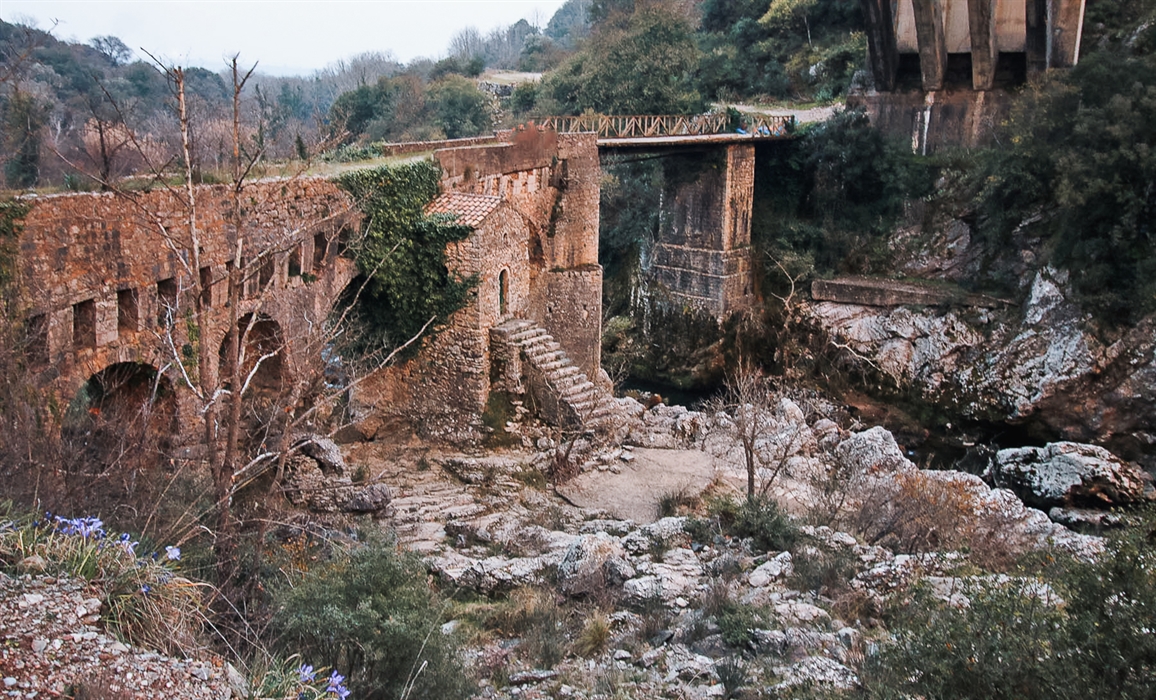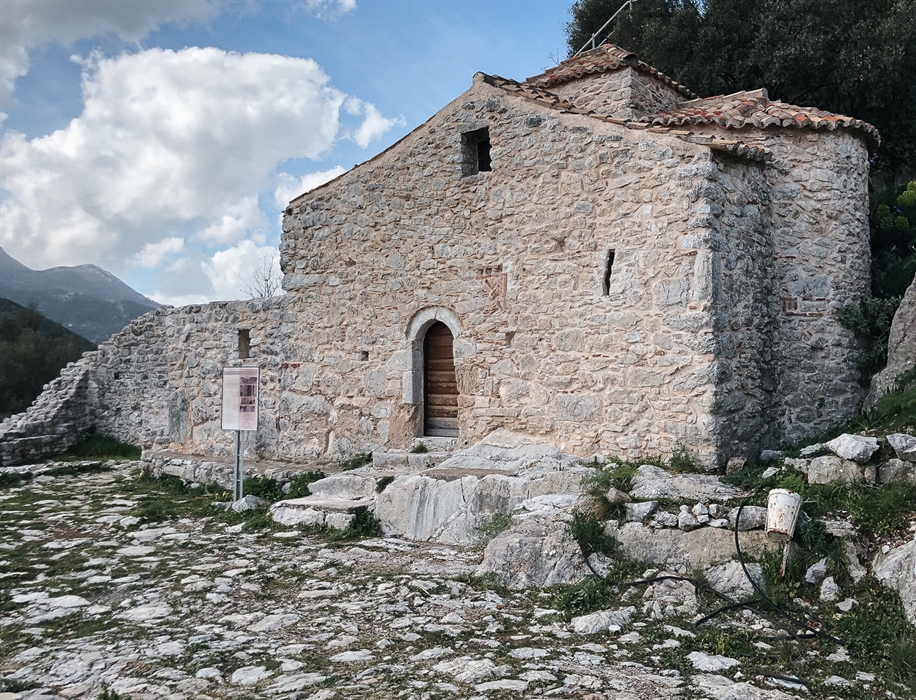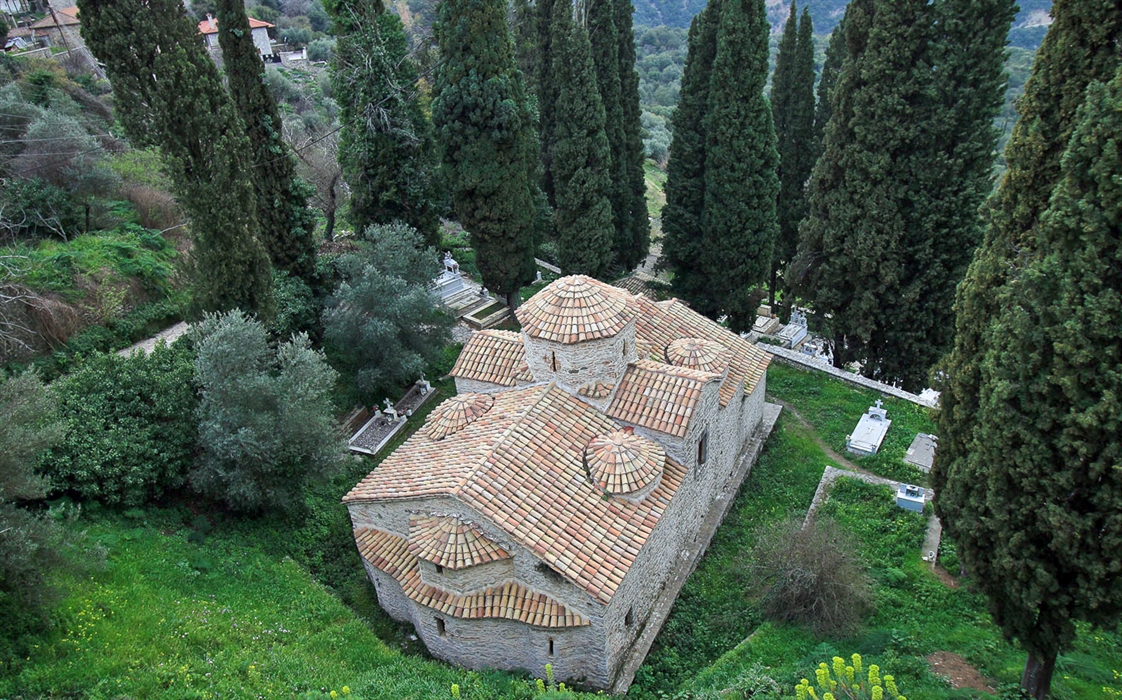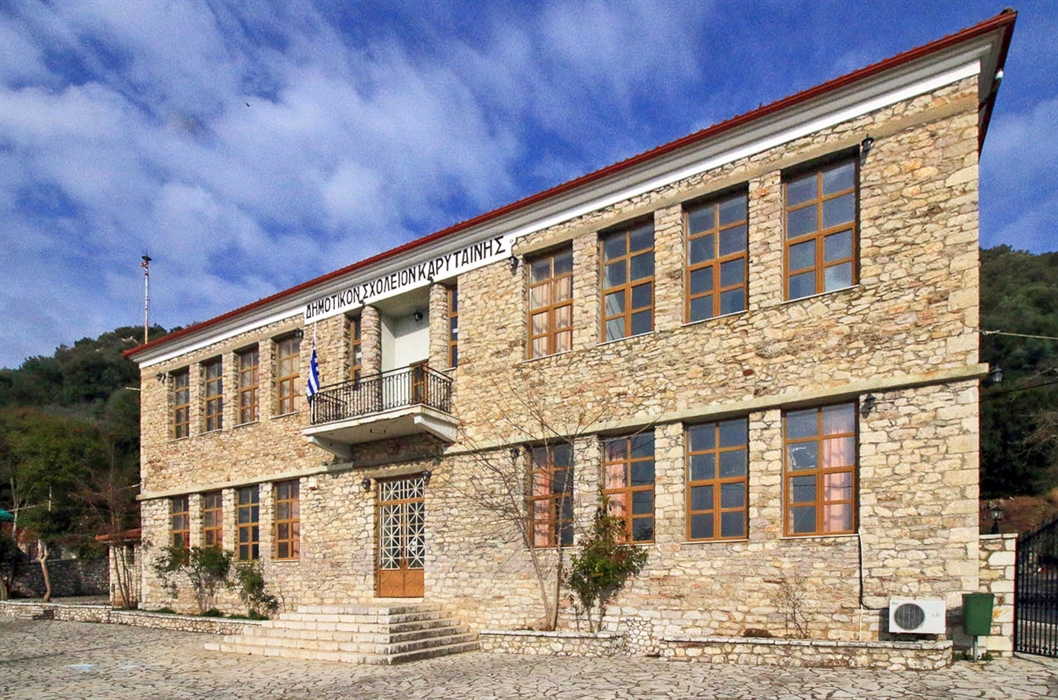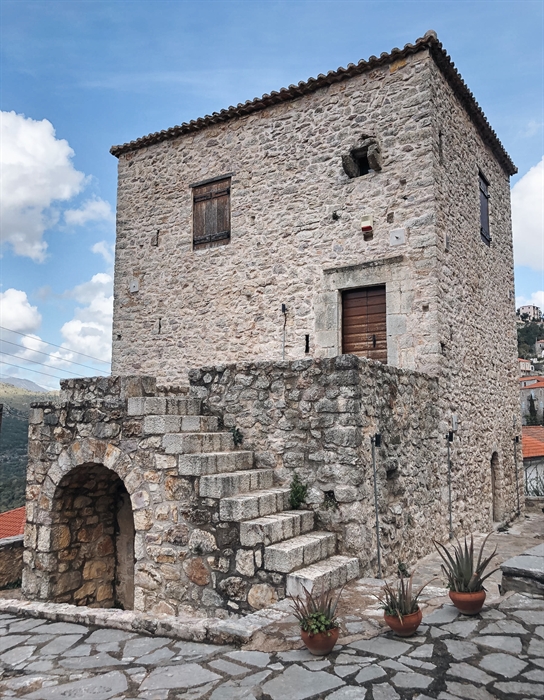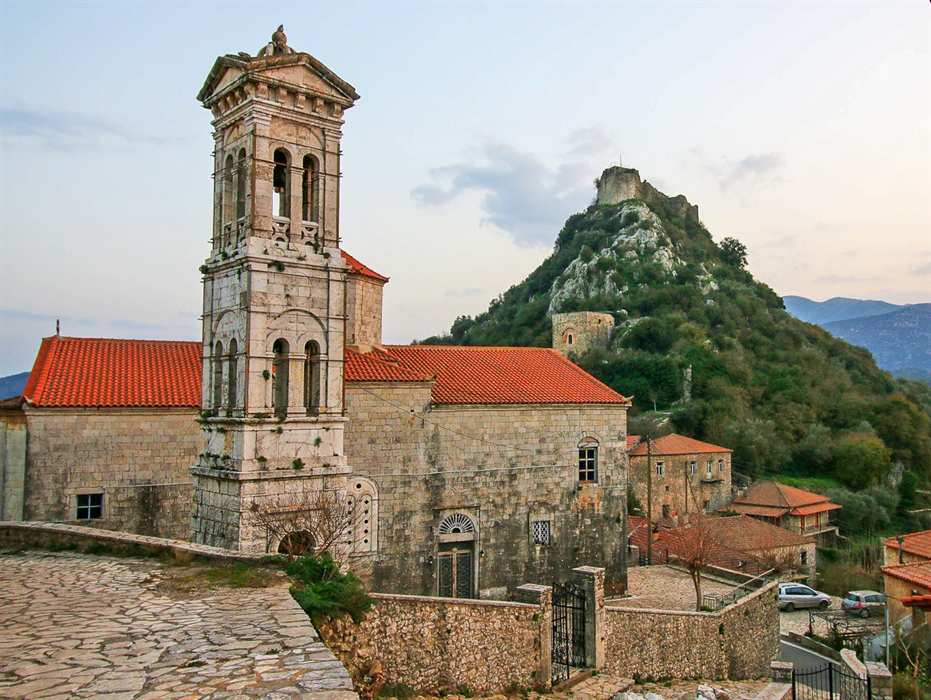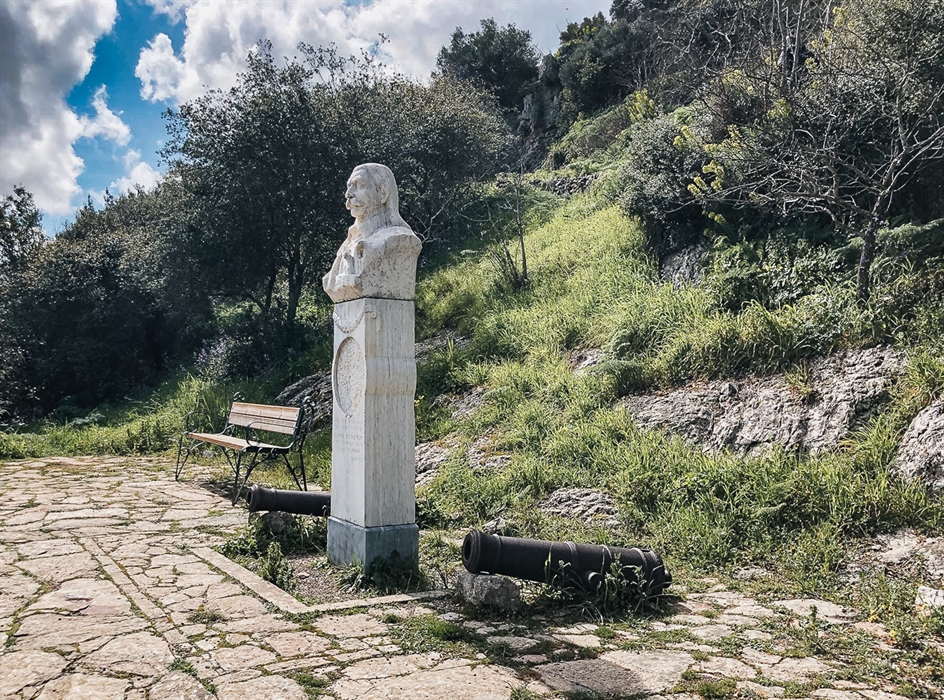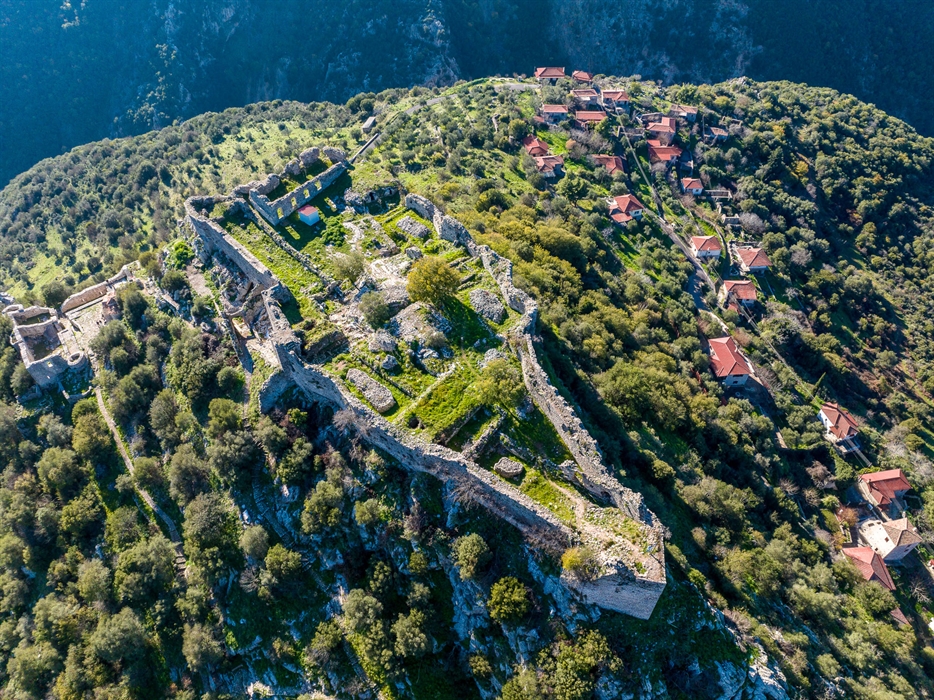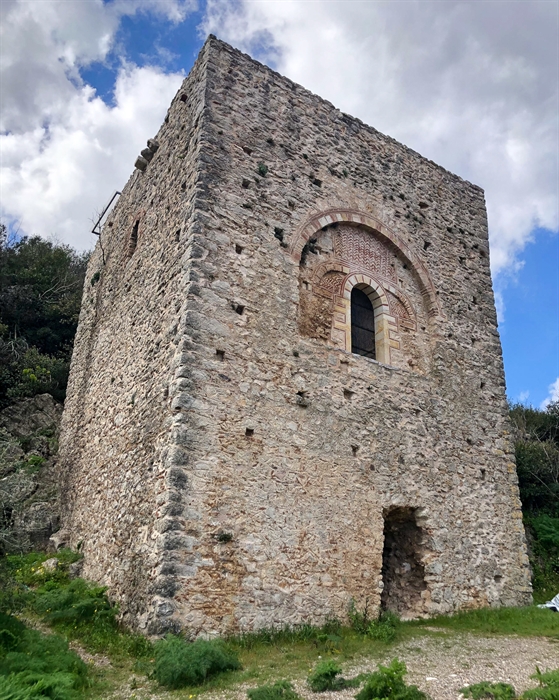Karytaina
The famous castle of Karytaina, built at a strategically important location, was the base of operations of the Elder of the Morea during the Greek Revolution of 1821. This traditional settlement will charm you with its architecture and old churches. Rivers Alpheius and Lousios surrounding it, paint impressive landscapes. In River Alpheius, rafting, canoeing-kayaking and rappelling enthusiasts, will engage in their favourite sports.
Karytaina stands out among the mountainous villages of Arcadia. Not only due to the beautiful landscapes that Alpheius and Lousios so generously offer to the region, or because of the fact that it has been declared a protected traditional settlement. The beautiful village, with the mild tourism development, hosts one of the most important fortresses of the Venetian and Ottoman Occupation, the most secure in western Arcadia. Its strategic location on the inaccessible hill was ideal for watching over the whole region.
The fortress was built in the 13th century by a French knight, named Geoffrey of Bruyères. There are indications that probably the castle of ancient Brenthe preexisted there. After a period of claims and repurchases, in 1320, the castle passed into the hands of Andronikos Palaiologos, and it became Byzantine property. Later, the Turks conquered it and held it, with a small break of Venetian occupation during 1685 and 1715. At the outbreak of the Greek Revolution, the rebels, led by Theodoros Kolokotronis, managed to drive away the Turks and conquer the castle. It was among the first ones to be liberated, after the victorious battle near Karytaina, on 27 March 1821. Later, it became the base of operations of the Greeks against Ibrahim’s troops. In 1826, Kolokotronis repaired the castle and the medieval castle that was later named “residence of Kolokotronis”. This is where the small church of Mother Mary of the castle lies, where he worshipped. It is a cross-in-square church with a dome, and it has Middle-Byzantine marble capitals.
At the castle’s highest point, there was a large-scale rectangular building, which served as accommodation for the Frank barons, but ruins are all that remains from the other buildings. The view makes up for the strenuous ascend, stretching from Mount Mainalo,Mount Lykaion,Mynthe, River Lousios and the valley of River Alpheius.
As part of the castle’s upgrade, two of its towers were restored. One is that of Mantzourogiannis. It must have been built around 1400, and it’s one of the best-preserved examples of a fortified Byzantine residence. On the other side of the village rises the tower of Leventaina. It dates back to the late 18th century, it has gun-loops and a murder hole. It has been renovated and the interior is open to visitors.
Churches In the neighbourhoods of Karytaina, stretching to the right and left side of the main street, you’ll admire the houses, which are examples of the typical Arcadian architecture. The village is famous for its churches, among which stand out the Church of Life-giving Spring (16th century), built upon an older church of the 14th century, with a very nice bell tower, and the Byzantine Church of Saint Nikolaos of the 13th-14th century, with a typical layout of a Byzantine church of Mystras. Exquisite icons have been preserved, dating back to the heyday of Byzantine art. On the main street, the Church of Evangelistria stands out, built in 1868, with a distinct tall bell tower. In Epano Machala lies the Chapel of Ai Lias, where the view is majestic.
There are few pensions, cafés and tavernas in the village. There is also a traditional grocery shop, where you’ll find handmade pasta.
The famous bridge of Karytaina
The castle of Karytaina is accompanied by the phrase “Toledo of the Peloponnese”, which Kazantzakis used to describe it in his book “Travelling to Morea”. Another famous phrase concerns the five-arched bridge on river Alpheius, the so-called “bridge of the five thousand drachma banknote”, because it was depicted, along with Karytaina, on the banknote’s back side. On the front side, Kolokotronis’ face was depicted.
The historical bridge, one among the oldest in the Peloponnese, was built by Geoffrey of Bruyères in the 13th century, just like the castle. It was renovated in 1440 by Raul Manuel Melikis, member of a respectable Byzantine family. Repairs were also made in the 19th century. It was 50 m long, 12 m high, with uneven arches, the biggest of which reached 9 m. At the base of one of the arches, there was a built-in chapel, dedicated to the Nativity of Mary (until 1699 it was there where Theophany was celebrated). It was a usual practice of the Byzantine Greeks, because they thought that churches protected bridges. During the Civil War, the famous bridge suffered damage, and an arch was blown up. A restoration study has been announced by the Directorate for the Restoration of Byzantine and Post-Byzantine Monuments.
Did you know that
The activities organised by companies in the region of Karytaina, include rappelling from the tall bridge and rafting and canoeing-kayaking in river Alpheius. The trips last about 3-4 hours, going through beautiful scenery.
Location
Find the destination on the interactive map below.
Categories
Σχετικό περιεχόμενο χρηστών (UGC)
Ενημερωθείτε για ενδιαφέροντα θέματα γύρω από τον προορισμό μέσα από το περιεχόμενο των χρηστών μας
Discover 7 hidden gems of the Peloponnese
Many of you may have already visited some of the most renowned attractions…
TOP 10 archaeological museums in the Peloponnese
Olympia, Mycenae, Epidaurus, Diros Cave, Ancient Corinth, Messene and…
TOP 10 Castles in the Peloponnese
Castles galore! Mystras, Monemvasia, Palamidi, Methoni, Koroni,…
Newsletters
- About us
- FAQ's
- Map
- Tourism information centers
- Disclaimer
- Sitemap
- Our brand
- Media roum
- Adding your bussiness
- Corporate
- MICE

Peloponnese. Greece beyond the obvious





Design and creation from Cosmote
Marinas and Moorings
Diving centers
Get inspired
- Media gallery
- Blog
- The Peloponnese in the media
- Your feedback
- Users' general content
- Users' local products
- Users' events content
- Ask a local
More
- Accommodation
- Travel agencies
- Restaurants
- Services
- Destinations Map
- Weather
- Public transport
- Events
- Frequently asked questions
- Useful phones
- B2B
- Destination Data
- Contact


